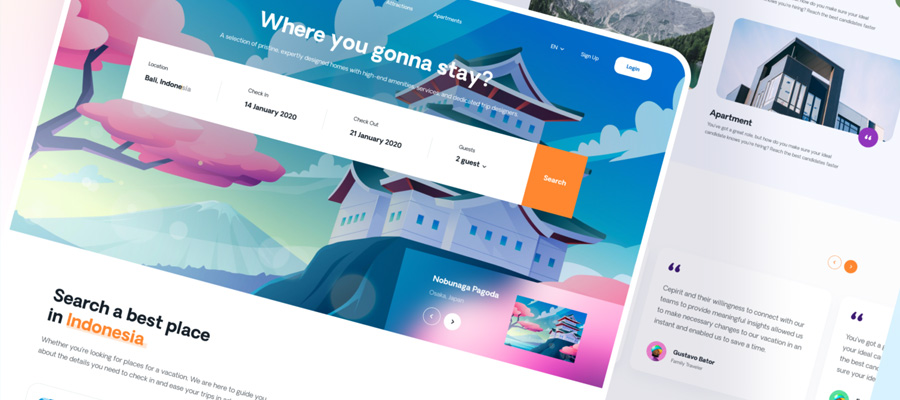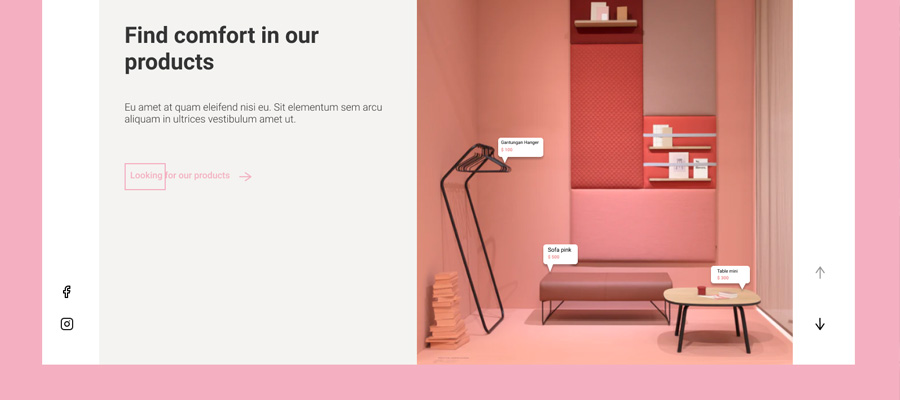Great news, designers! With Google’s new Page Experience Update coming in 2021, you’ll be rewarded on the search rankings more than ever for having creative, engaging and user-friendly designs. Design is about to become even more important in sorting the good websites from the bad, as page experience becomes a key ranking factor, so it’s worth getting up to speed on how you can prepare to reap the new benefits next year and boost your website’s SEO.
Improving User Experience (UX) is the goal here. Simply put, based on Google’s newly announced Core Web Vitals, the update means you’ll want to avoid long loading times, annoying pop-ups and poor page visibility - anything that can be frustrating for your user. That’s just the beginning though, and Google have already announced these will be updated and evolve over time as users’ idea of what a good website is changes.

Google Soft UI by Maxim Nilov
The funny thing is that, at its heart, this actually isn’t anything new at all. Designers know just how important intuitive user-friendly pages are for long-term success. The only difference is that now, so does everyone else.
What are Core Web Vitals?
Before we get into how you can benefit from your creativity, let’s discuss the technical fundamentals including what the Core Web Vitals actually are. You may have heard of the newly announced Web Vitals initiative designed to give developers useful guidance on speed and performance. Core Web Vitals are the three main ways to measure your speed metrics.
1. Largest Contentful Paint - the loading time of a page’s main content i.e. when it becomes visible.
2. First Input Delay - how quickly interactive elements like links respond and open when clicked on.
3. Cumulative Layout Shift - a new metric that penalizes unexpected layout shifts when the page is first loaded, i.e. when a link you think you’ve clicked on suddenly moves down and you’ve accidentally clicked something different entirely.
Stand out with design
As a designer, you know that every great website needs equal parts beautiful aesthetics and strong functionality to offer a truly one-of-a-kind page experience which is exactly what you should be aiming for. While content may still be king when it comes to ranking, website design is his underrated right-hand man (or woman) who helps to shape and defend his rule at the top of the search results. Now, how can you make this happen?
Slash loading times
We all know beauty can sometimes come at a cost: long loading times. Sometimes users will be willing to wait if a page catches their attention, but the majority of the time, it’s not that easy and users will look elsewhere if it takes longer than around 3 seconds. An easy way to check the speed of your existing pages is to use Google Search Console to see where you can improve.
As a start, avoid heavy themes and designs where possible, and consider switching to lighter, more simplistic designs with minimal HTML, CSS and JavaScript. Don’t forget to optimize your images, particularly high-resolution background and banner images, and regularly audit your pages for unnecessary elements.
Keep it simple
The last thing a user wants to encounter is unnecessary clutter. Whether that’s ads or images, it can be a distraction that detracts from everything else on the page, especially the content they are there to see. Only add images if they add value and think about your use of both intrusive and non-intrusive ads and especially pop-ups - generally, the fewer the better.
A good website design is clear and intuitive. A user should never need a guidebook just to use it. An example of this is navigation, which should always be simple. Most people are used to seeing navigational menus a certain way, whether that be the hamburger menu or commonly used icons, and will expect to see familiarity. Creating a fun and unique menu for the sake of it might look good, but may also leave your users confused or frustrated.
Make it responsive
If your website design isn’t already mobile-friendly, it should be. With approximately half of web traffic worldwide coming from mobile devices, it’s no surprise Google is making this practically essential to success. Google themselves recommend Responsive Web Design as the easiest way to implement this. Start with Google’s Mobile-Friendly Test to see how your website is currently doing.
There are many ways in which mobile-friendly versions of a site are different from their desktop and tablet counterparts. Changes to the layout are essential for a smaller screen like switching to one column instead of multiple, condensing the navigation, adjusting the padding and spacing accordingly and increasing the touch targets - fingers are a lot less precise than a cursor. The content should be the main focus of a mobile site and should be laid out in order of importance to the user with adaptable content - no huge images or wall-to-wall text.
Tighten security
Google wants to keep its searchers safe when browsing, so of course it’ll be less likely to recommend your site if it isn’t doing everything it can to protect its users. Show Google you can be trusted by getting your website an SSL certificate - not only will it help with rankings, but it’ll improve your brand reputation by having the recognizable https label. You should also regularly check the security of your website using Google Search Console’s security report which will flag any malicious or deceptive content.
Conclusion:
Like we said earlier, this may not be anything new to you at all. You may already be doing everything right, and if that’s true for you, congrats! You’re ready to start climbing the rankings. If there’s anything the announcement of this update has demonstrated, it’s that you should never stop searching for new ways to make your designs even more engaging.























Comments